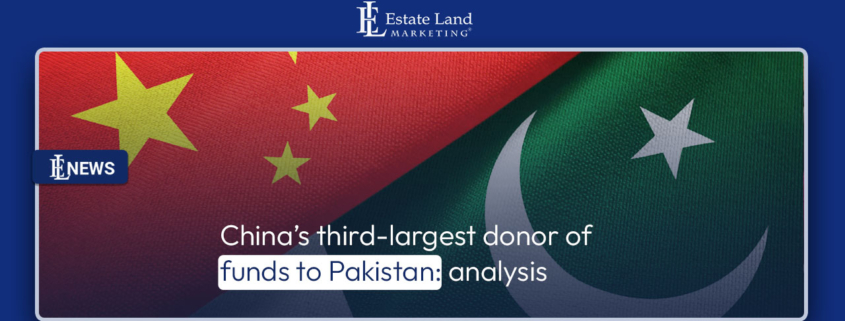China’s third-largest donor of funds to Pakistan: analysis
DEHRADUN: With a $70.3 billion portfolio, Pakistan is the third-largest receiver of Chinese development funding globally, according to a report published on Monday by the US-based international development research lab AidData.
Read more with EL news: KMC is prepared to work with WB on development projects
In Pakistan, grants accounted for only 2 percent of China’s portfolio between 2000 and 2021; the other portion was in the form of loans, according to the AidData research, which draws its conclusions from data from over 5,300 sources.
According to the American research company, the average interest rate on loans was 3.72 percent, with an average maturity length of 9.84 years and a grace period of 3.74 years.
With a share of 40 percent, or $28.4 billion, development finance went mostly to the energy industry between 2000 and 2021. The following two main recipients of Chinese money were transport and storage (14 percent or $9.7 billion) and general budget support (30 percent or $21.3 billion), according to the data.
With a $28.4 billion energy portfolio, China’s development finance was the largest in the world during the same period. Angola ($24.7 billion) and Vietnam ($21.7 billion) came in second and third place, respectively. According to the AidData analysis, Pakistan’s energy portfolio made up 10.2 percent of China’s total global energy portfolio, which is spread across dozens of nations.
According to an administration-by-administration breakdown of Chinese development money from 2000 to 2021, the PML-N government (2013–17) was able to draw in the most inflows ($36.2 billion) during the course of the 21-year period. $19.6 billion, $10.4 billion, and $4.1 billion were drawn to the PTI, PPP, and Musharraf governments, respectively.
According to data, under the PML-N government, the energy sector received the largest share of development financing (52.8%), whereas under the PTI government, “general budget support” continued to be the leading receiver of flows (61.3%).
China has been Pakistan’s main source of foreign development funding since 2012; in 2013, it outspent the US by 1.6 times, in 2016, by 7.7 times, and by 22.4 times in 2021.
According to data, 82% of the projects that were committed to till 2021 were “completed,” while 13% were still “under implementation.”
Among the 47 projects valued at over $500 million, the bulk (21), followed by energy (15) and banking and financial services (six), were related to general budget support. Out of the seventeen projects worth over $1 billion, five fell under the energy category and six under general budget support.
According to data, the PPP government’s yearly rate of obligations increased from $509 million during the Musharraf era to $2.1 billion. The Sharif/Abbasi years saw it reach $7.2 billion annually. The average yearly commitments made during the PTI government were $4.9 billion, however data indicated that general budget assistance lending was the main driver of those promises.
According to the report, Pakistan made up China’s third-largest country-level loan portfolio globally, after Russia and Venezuela, with a total of 161 loans totaling $68.9 billion.
Rescue lending to Pakistan, which originated in China, was the largest in the world at $28.13 billion; it was followed by Venezuela, Ecuador, Argentina, and Venezuela. According to the statement, this illustrates the “particularly close all-weather friendship between the two countries.”
Pakistan is 19.6% of GDP, or $67.2 billion, in governmental debt to China. The research stated that after 2017, a greater percentage of Chinese development money has gone into rescue loans rather than developmental projects, which was the hallmark of the China-Pakistan Economic Corridor (CPEC) during its peak years of 2014–2017 when significant amounts of new pledges were made.
Additionally, roll-overs increased in frequency after 2017 and have been matching or surpassing new loan commitments since 2019.
Only three infrastructure projects totaling $452 million have been cancelled or suspended out of 127 projects worth $38.8 billion, according to data.
Estimates from AidData show that certain Environmental, Social, and Governance (ESG) concerns have been present in more than half (52 percent) of the infrastructure project portfolio. It states that the energy sector has been exposed to the highest levels of ESG risk, with 51% of the portfolio experiencing one or more of these issues.
Based on AidData’s assessment, just 25% of these programmes have robust ESG safeguards in place. According to the analysis, up to 46% of these projects faced social risks including labour breaches or community protests, compared to only 16% and 19% for environmental and governance risks, respectively.



